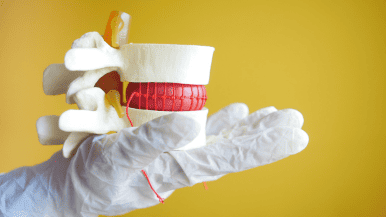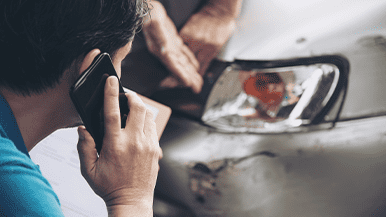- How do you get bunions?
- What are the symptoms of bunions?
- How can I get rid of bunions?
- Should I have surgery for my bunions?
- When should I see my doctor for bunions?
Bunions are a medical condition known as hallux valgus. A bunion forms at the base of the big toe joint as a bony bump that pushes the toe out of alignment. As the joint becomes misaligned, the tip of the big toe moves toward the other toes, creating a foot deformity, discomfort, and eventually, arthritis. At the late stage of the disorder, pain and an impaired gait may occur. Given that the affected joint carries much of your body weight while walking, bunions can cause stiffness and soreness that makes wearing shoes very uncomfortable.
How Do You Get Bunions?
While bunions are probably not the kind of inheritance you hope for, these painful foot deformities are often passed down generationally. A study in Arthritis Care & Research found that white men and women of European descent often inherit these types of foot disorders from their parents.
Bunions are genetic. They can increase the discomfort depending on the shoe gear that people wear. WebMD reports bunions are quite common; 23% of people aged 18 to 65 and 36% of those over 65 have this foot disorder. There is a higher prevalence among women and the elderly.
Although bunions are not preventable, wearing shoes that fit properly and avoiding high heels may help slow the progression of the disorder. It’s all dependent on your genetics as well as some shoe gear that amplifies the deformity. Stiletto heels and pointed toes can make living with a bunion very difficult.
What Are the Symptoms of Bunions?
 Pain is the most common symptom of a bunion although some people live with the disorder and are lucky enough not to experience severe discomfort. For them, the biggest symptom of a bunion is how the foot appears.
Pain is the most common symptom of a bunion although some people live with the disorder and are lucky enough not to experience severe discomfort. For them, the biggest symptom of a bunion is how the foot appears.
If your big toe points toward the smallest toe, you may have a bunion. Look for a bony bump on the side of your foot. Sometimes the bump may be red or callused. They may be either just ugly and annoying or they may also be painful.
Bunions typically grow more prominent over time, which can lead to other issues such as:
- Bursitis, a painful condition where the pads between your joints become inflames
- Hammertoe, which is an abnormal bend in the toe next to your big toe
- Metatarsalgia, which causes the ball of your foot to swell and grow painful
All of these conditions cause discomfort, which can cause the patient to limp or have an affected gait. This in turn can cause back, knee, or other pain.
How Can I Get Rid of Bunions?
Bunions are a permanent problem; they do not go away on their own. Surgery can get rid of bunions but there are several treatments for bunions that are less invasive.
Bunion treatments are conservative and surgical. We like to start with conservative treatment which includes wider shoe gear, bunion splints, and silicone padding. Wearing low-heeled, comfortable shoes with a wide toe area will help keep the bunion from flaring up. Some other ways to treat a bunion without surgery include:
- Get in shape and maintain a healthy weight to decrease the pressure on your feet
- Silicone padding can ease your discomfort
- A toe splint to hold the toe in the right position to ease the pain
- Ibuprofen or another non-steroidal anti-inflammatory drug may help
- Ice packs, warm soaks, or a massage may also help
If these treatments do not help, surgery may be an option to eliminate the bunion and reshape the foot.
Should I Have Surgery on My Bunions?
Every patient is different, so developing a customized treatment plan is important. Surgical treatment options for bunions all depend on the deformity of the bunion.
The goal of surgery is to eliminate the pain from bunions and put the toe back where it belongs. These types of surgical procedures have been performed since the 1940s, and today, there are roughly 150 types of procedural options for bunion surgery.
One type of surgery is big toe fusion, where the doctor removes the bunion and fuses the big toe into a functional position, and affixes it with small plates and screws.
Our team performs minimally invasive bunion surgery. Treatment options can be the minimally invasive surgery that allows the patient to get back on their feet sooner and also minimizes pain and swelling for the patient.
With minimally invasive bunion surgery, the doctor will make a much smaller incision that is much different from traditional “open” surgery. In traditional surgery, the incision is typically two to six inches. In minimally invasive surgery the incision is no more than ½ inch long. The doctor then accesses the bunion through these small portals. Depending on the patient’s condition, the doctor may perform one of several different procedures such as bone shaving, bone-cutting (a realignment osteotomy), and or a bone fusion procedure.
Podiatry Today reports the most common bone correction for bunions is realignment osteotomy. In many of these cases, the minimally invasive surgical approach can be used.
Everyone is different, but the recovery time from a minimally invasive approach is generally less; many patients are walking within a few days. For most bunion surgeries, the patient is on a weight-bearing timeline that typically includes:
- Two to six weeks of no or very limited weight-bearing
- About six weeks before you can drive a car
- About eight weeks before switching back to a regular pair of tennis or other comfortable shoes
- Three to four months for a complete recovery
When Should I See My Doctor for Bunions?
Even if your bunions aren’t causing severe discomfort, it’s a good idea to see a podiatrist now for a consultation. He can help you with nonsurgical measures to reduce complications and pain late on at the joint becomes more affected.



